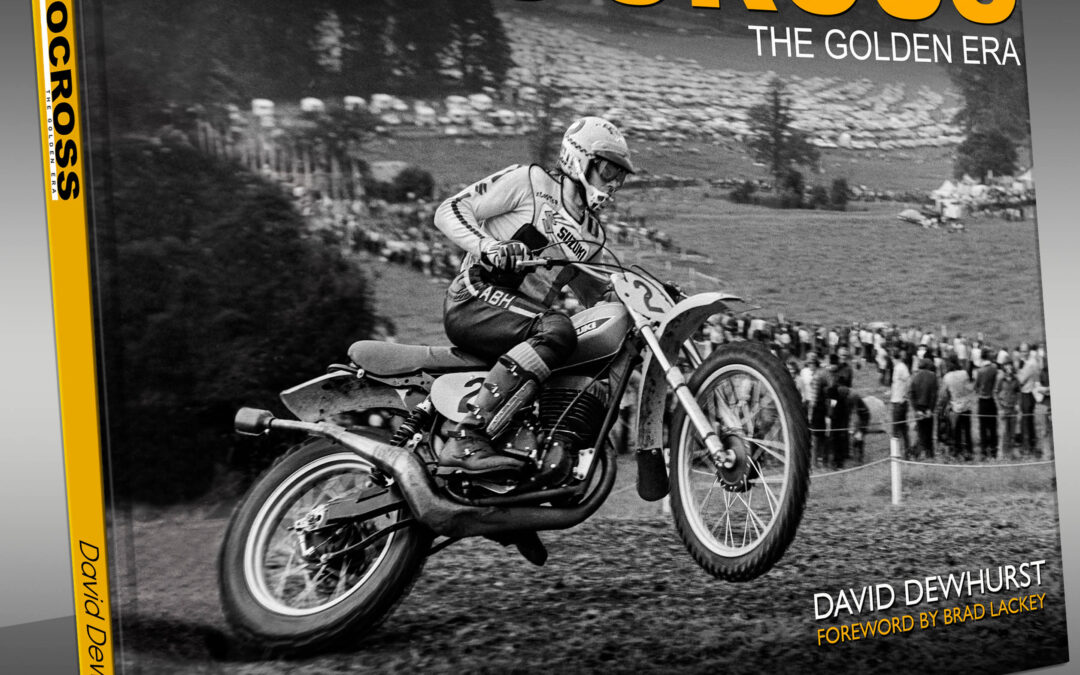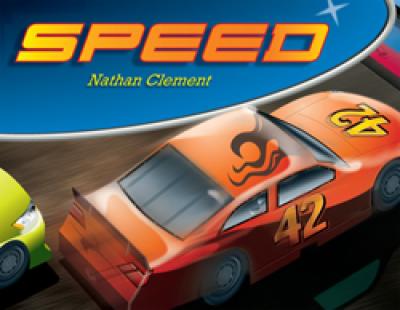
This book presents the unprecedented collection of racing and performance cars that appeared at the Utah Museum of Fine Arts during the summer of 2012. The exhibit is gone now, but the collection is all here in this beautiful hardcover volume. Written by exhibit curator Ken Gross and photographed by the inimitable Peter Harholdt, these select vehicles embodied the state-of-the-art technology of their era while pioneering advances in metallurgy, streamlining, electronics, and engineering. Includes: * Miller 122 Front-Wheel-Drive * Bugatti Type 35B Grand Prix * The Mormon Meteor I and Mormon Meteor III * The Speedomotive Special Streamliner * 4 1/2 Litre Blower Bentley * The ‘Million-Franc Delahaye’ * Shelby Daytona Coupe And many more. These cars exemplify the best in early 20th century industrial art and functional design.
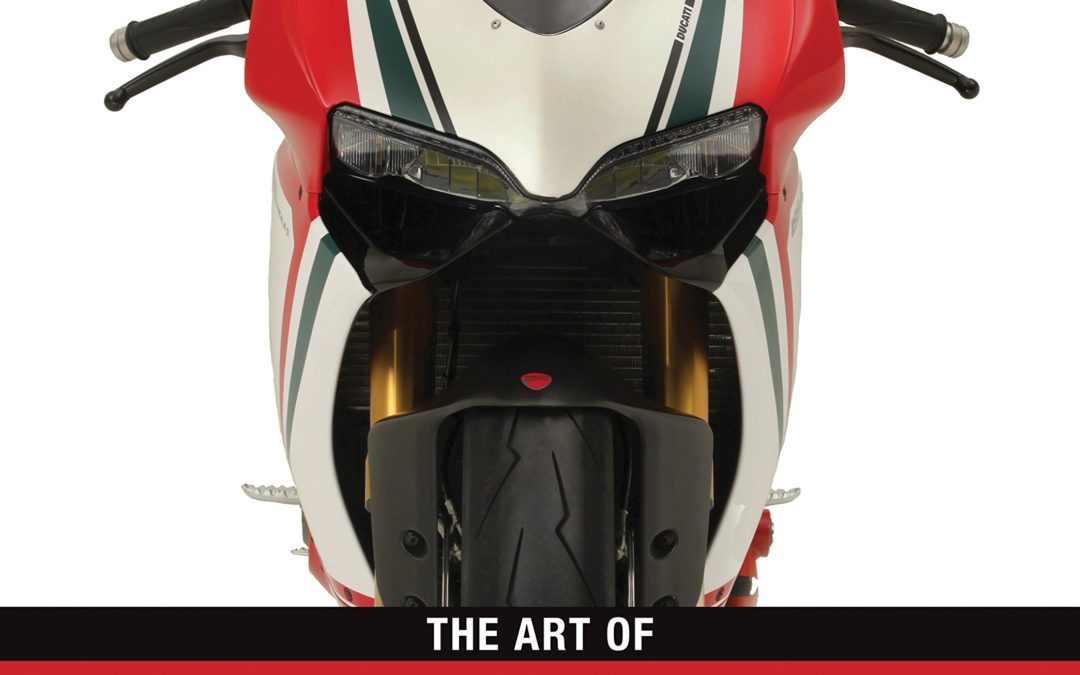
SOLD OUT
Celebrate more than 60 years of Italian motorcycle mastery. Over 60 years ago in Bologna, Italy, a small company called Ducati began manufacturing simple, inexpensive 50cc motorcycles–really no more than two-stroke-powered bicycles. Since then, Ducati has evolved into one of the most storied names in the motorcycling world, its lineup of beautiful machines revered for their technical excellence and extreme performance. In The Art of Ducati, Ducati expert Ian Falloon teams with renowned British photographer James Mann to present a gorgeously illustrated, wonderfully curated review of more than six decades of Ducati excitement. From the single-cylinder bikes of the 1950s and 1960s to the bevel-drive twins of the 1970s and early 1980s to the high-performance bikes of the 21st century, The Art of Ducati showcases a motorcycle marque that has never rested on its laurels. Ducati’s style and technology have constantly evolved, engineering timeless classics like the 900SS, Darmah, Mike Hailwood Replica, 851, 916, Monster, and ST sports touring series, bikes that laid the foundation for today’s cutting-edge models: the Panigale superbike, Multistrada adventure bike, all-new Monster, Hypermotard, and Diavel power cruiser. While there’s no end in sight for Ducati’s dominance, The Art of Ducati pays homage to their past six-plus decades of masterful motorcycle engineering.
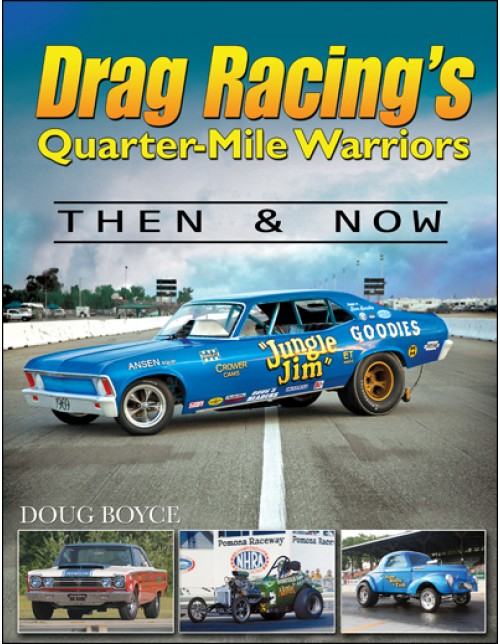
SOLD OUT
The true beginnings of racing is an argument never really settled. One could argue that as soon as the second car was manufactured, a contest of speed ensued against the first. While the roots of modern drag racing go back to the dry lakes of California in the 1930s, drag racing became a sanctioned affair in the early 1950s with the forming of the National Hot Rod Association. In the 60 years that have followed the first NHRA sanctioned race in 1953, the changes in technology have been astounding, as well as the categories and classes in which racers have competed. And of all of the eras, the golden era of the late 1950s through the early 1970s is the clear fan favorite.
Drag Racing’s Quarter-Mile Warriors: Then & Now takes a unique look at the most memorable, interesting, and successful cars from this golden age of drag racing. Chronicled are Diggers and Rail dragsters, Funny Cars, wild Altereds, door slammers including Super and Junior Stock cars, early 1970s Pro Stock cars and more. Vintage and modern photography in a unique “then and now” format cover the cars as they first competed, through their evolution (or inactivity) over the years, and how they look today. Cars driven by legends such as Mickey Thompson, Tommy Ivo, Dick Landy, Grumpy Jenkins, Sox & Martin, Don Nicholson, Bob Glidden, and more are featured in evolutionary detail.
Never before has a book covered the cars from the golden age of drag racing and combined it with a modern look at where the cars are today. From full restorations to cars still competing in nostalgia events, from museum pieces to those collecting dust in a dark corner waiting for another day in the sun, Drag Racing’s Quarter-Mile Warriors: Then & Now gives you a unique look at how these cars have fared over time. No drag racing library is complete without it.

Celebrating fifty seasons of the most spectacular motorsport, the World Rally Championship marries state-of-the-art technology with endurance and speed in a battle against both the clock and the elements of nature. Rallying is the mother of all motorsport. Mastering a car on gravel, snow and asphalt, in extreme heat, ice, rain, fog and darkness is the supreme discipline on four wheels. The World Rally Championship, which has been held since 1973, has entered its 50th season. Time to look back at these automotive and human legends from Alpine to Integrale, from Colin McRae to Sébastien Loeb, from the wild Group B cars to the technically fascinating Rally1 racers with hybrid drive. It’s all here in this book.
With hundreds of photos from the McKlein archive, of which many are unique to this book, it encapsulates the highs and lows of a half a century’s fight for the WRC crown: the technical development, the dramas, the heroic sagas and the curiosities. It’s an encyclopaedia of an era of enthusiastic drifting, through to the battle for tenths of a second with the fastest cars of all time travelling on a mixture of gravel roads. A book of stories and pictures about the most spectacular motorsport in the world.
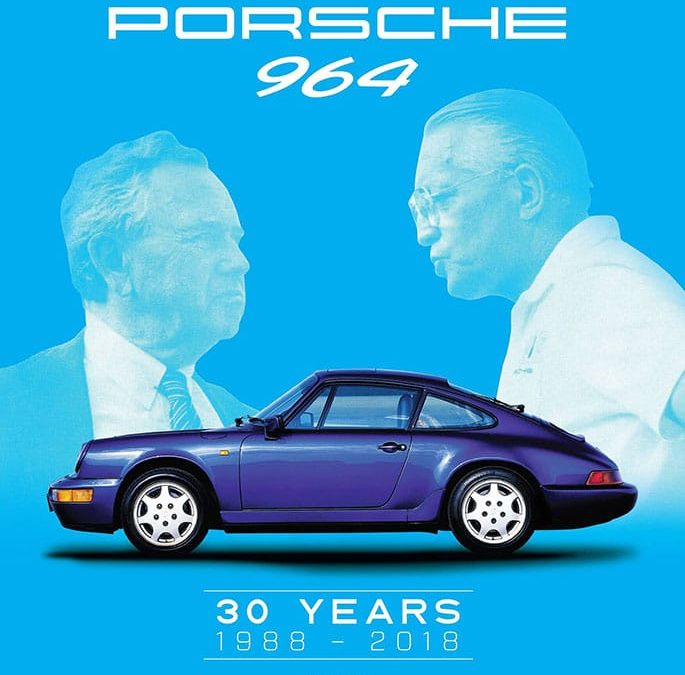
To celebrate the Porsche 964’s thirtieth anniversary Berlin Motor Books published PORSCHE 964 30 YEARS” 1988–2018 in a limited edition of 964 copies. Following his book about the G model, ‘Porsche 911 – Aircooled Years 1974-1989′. The author Andreas Gabriel deals in depth with the Porsche 964.
A classic, which was already close to the end
This model line became one of the most important in the car’s history because the 911 with its air-cooled boxer engine threatened in the mid-1980s to drift into the long grass in terms of technology. The heating problem seemed about to be the downfall of the automobile that to this day has been the most important car Porsche has ever made. But its makers were not going to let that happen. Even without official instructions, and with the threat of impending dismissal, they continued their development work with a view to eliminating the 911’s few weak points. The result was impressive. In 1988 the 964 series with its state-of-the-art technology catapulted the 911 concept into modernity. The 911 Carrera 4, the first-ever production model all wheel drive sports car, was indeed way ahead of its time, and to this day the 964 remains one of the most popular Porsches ever, combining mature and reliable technology with safe handling characteristics and a fascinating engine sound.
Book introduces each model of the series
The author Andreas Gabriel was again able to interview the man who from 1979 on played a leading role in championing the 911’s survival and made his mark on the 964 range. The book ‘Porsche 964 “30 YEARS” 1988–2018’ presents each and every model in the series. In addition to detailed buying advice and price trends in recent years, the book takes an in-depth look at all of the specials, some details of which are unknown even to experts.
For this book project Porsche once more opened its historic archives, thereby enabling previously unseen photos from the 964’s development phase to be published. The internationally recognized Porsche expert Tobias Kindermann has also compiled for the book an exclusive technology and statistics section about all Porsche 964s made between 1989 and 1994.
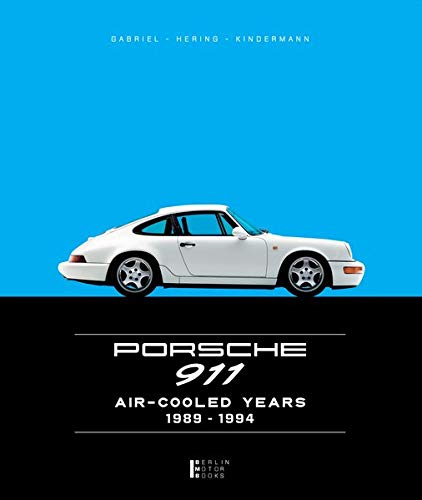
Following the book about the G model, ‘Porsche 911 – Aircooled years 1974-1989,’ published in 2017, the authors now deal in depth with the Porsche 964.
This model line became one of the most important in the car’s history because the 911 with its air-cooled boxer engine threatened in the mid-1980s to drift into the long grass in terms of technology. The heating problem seemed about to be the downfall of the automobile that to this day has been the most important car Porsche has ever made. But its makers were not going to let that happen. Even without official instructions, and with the threat of impending dismissal, they continued their development work with a view to eliminating the 911’s few weak points. The result was impressive. In 1988 the 964 series with its state-of-the-art technology catapulted the 911 concept into modernity.
The 911 Carrera 4, the first-ever production model all wheel drive sports car, was indeed way ahead of its time, and to this day the 964 remains one of the most popular Porsches ever, combining mature and reliable technology with safe handling characteristics and a fascinating engine sound. The author Andreas Gabriel was again able to interview the man who from 1979 on played a leading role in championing the 911’s survival and made his mark on the 964 range.
The book presents each and every model in the series. In addition to detailed buying advice and price trends in recent years, the book takes an in-depth look at all of the specials, some details of which are unknown even to experts. For this book project Porsche once more opened its historic archives, thereby enabling inter alia previously unseen photos from the 964’s development phase to be published. The internationally recognized Porsche expert Tobias Kindermann has also compiled for the book an exclusive technology and statistics section about all Porsche 964s made between 1989 and 1994.
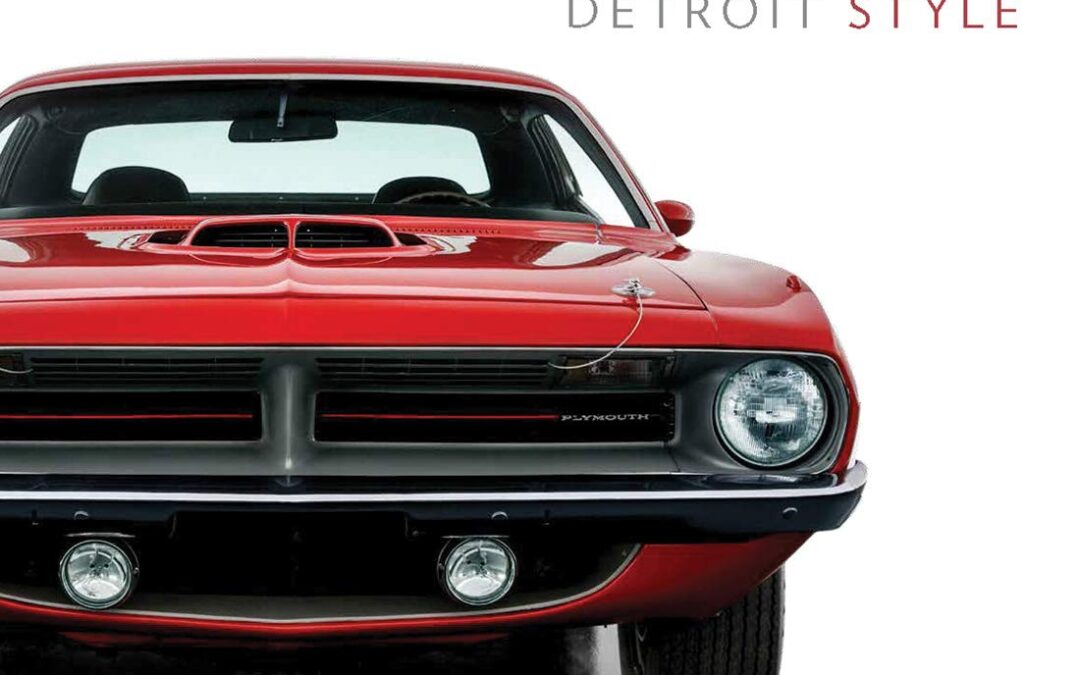
A dynamically illustrated exploration of 70 years of automotive design in the Motor City
Detroit, nicknamed Motor City, has always been a leader in car design. As the city became the center of the American automobile industry in the early 20th century, its studios became incubators for new ideas and new styles. This volume highlights the artistry and influence of Detroit designers working in the industry between 1950 and the present day, giving readers a sumptuously illustrated opportunity to discover the ingenuity of influential (and surprisingly little-known) figures in postwar American car design. Detroit Style showcases 12 coupes and sedans, representing both experimental cars created solely for display and iconic production models for the mass market. Dozens of design drawings and images of studio interiors—along with paintings and sculptures—highlight the creative process and dialogue between the American art world and car culture. These materials in addition to interviews with influential figures in car design today bring new insights and spark curiosity about the formative role Detroit designers have played in shaping the automotive world around us, and the ways their work has responded to changing tastes, culture, and technology.
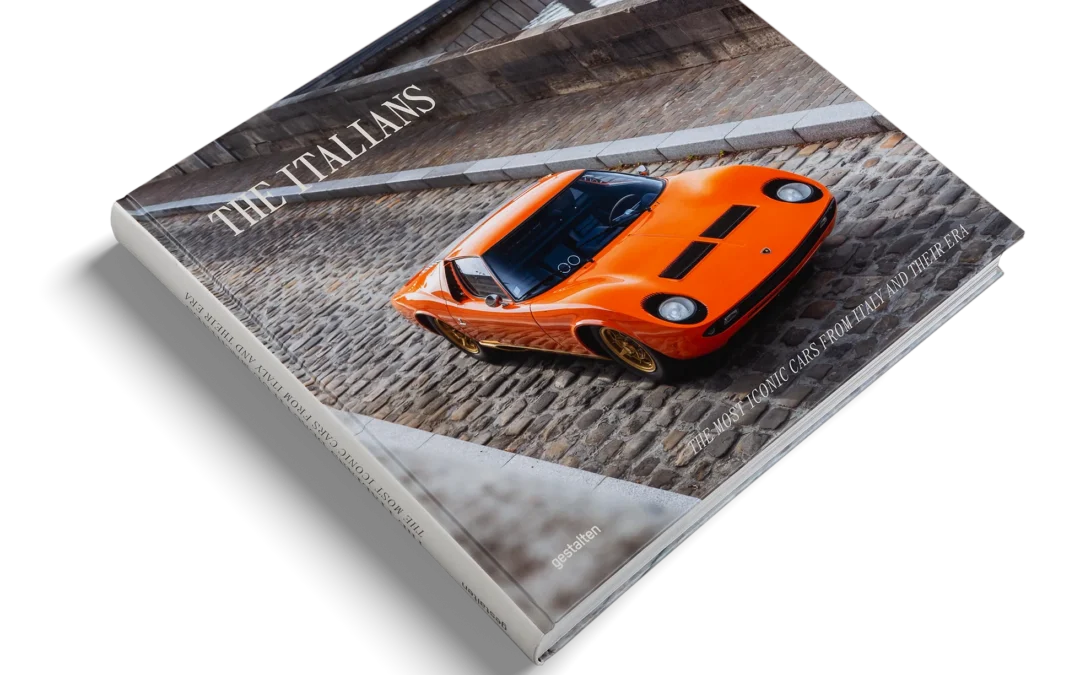
Italy is the homeland of “La Bella Macchina” and the cradle of automotive culture. This book celebrates the most iconic cars and visionary designers from the peninsula.
This stunningly illustrated book takes readers on a journey through the history of Italian automotive design, showcasing some of the most iconic and beloved models from the 1920s to the early 2000s.
Delving deep into the craftsmanship and artistry of vintage automobiles, this book explores how Italian car design has been at the center of technology, culture,and creativity—and how Italian designers like Pininfarina, Zagato, Bertone, Giugiaro, Gandini, and Ghia have influenced international car designs and brands.
With striking archival and contemporary images, The Italians – Beautiful Machines reveals the fascinating stories behind some of the most famous cars from Italy and what makes them so desirable. This book uses the lens of automotive design to chart the evolution of culture over the last 100 years. The Italians – Beautiful Machines is an impactful celebration of Italian car design and its lasting influence on design and culture.
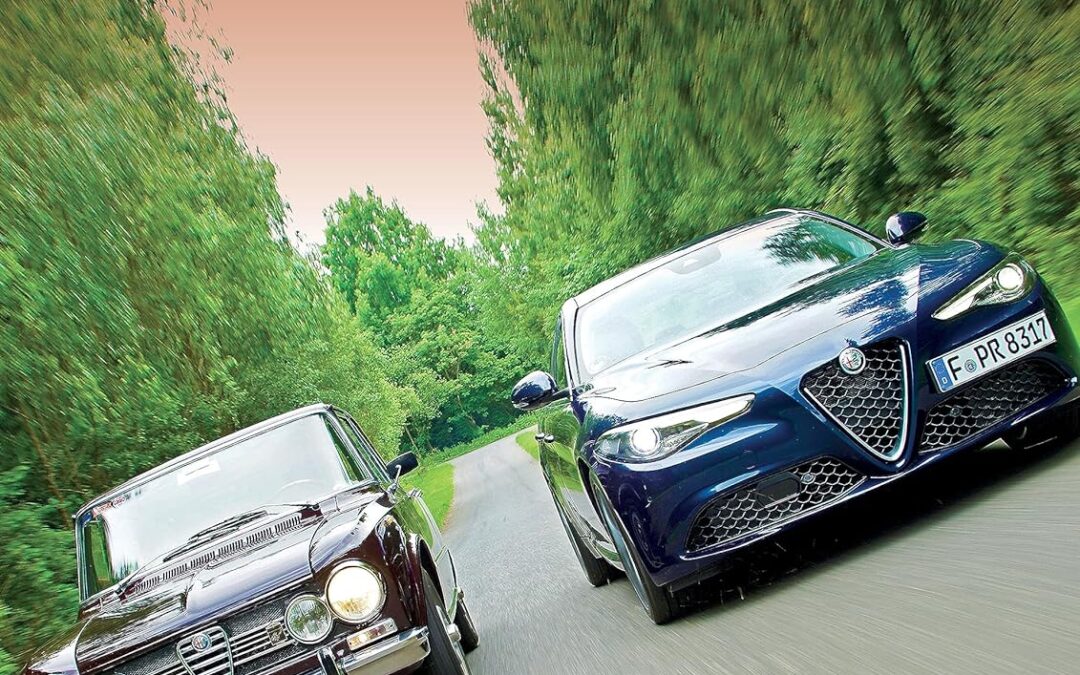
A complete history of 110 years of Alfa Romeo, the cars, the people, the racing, and the heritage.
For more than 110 years, Alfa Romeo has set the standard for elegant, sophisticated, and racy Italian automobiles. The first Alfa Romeo, the Tipo 24HP, rolled off the line in 1910 and paved the way for such classic and well-known models as the Tipo 33 Stradale, Guilia, Giulietta, Alfasud, Alfetta, and Stelvio—Alfa Romeo’s first SUV. And this comprehensive book covers them all and much more.
Automotive writer and Alfa Romeo buff Christian Schön celebrates the 110th anniversary of Alfa Romeo by taking a deep dive into the people, places, races, and especially the cars that are part of Alfa Romeo’s rich history and heritage. The book includes
• a thorough timeline of all the important events and milestones in Alfa Romeo’s 110-year history, 1910–2020;
• special sections on Alfa Romeo’s auto designs, engines, technology, concept cars, factories, and advertising, as well as the Alfa Romeo Museum in Milan and the key personnel responsible for Alfa Romeo’s rise to the top;
• an in-depth look at Alfa Romeo’s racing history, including five world championship titles, a dozen European championships, 11 victories in the legendary Mille Miglia endurance race, and a victory in the German Touring Car Championship (DTM); and
• exciting “behind the scenes” stories and more than 350 color and black-and-white images.
Anyone with a passion for Alfa Romeo—or automotive history, design, and racing in general—will find excitement in these pages. The book is a must-have for any automotive library.
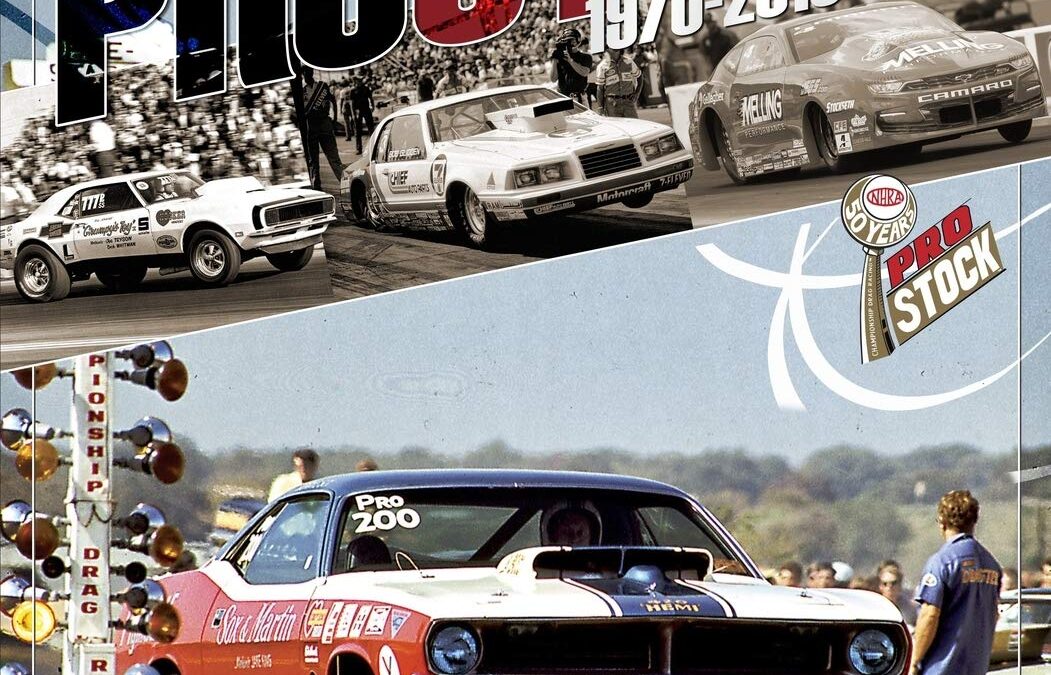
No collection of a true student of the sport will be complete without The History of NHRA Pro Stock. From the achievements of pioneers such as Bill “Grumpy” Jenkins and the famed Sox & Martin through season after season of utter domination by Bob Glidden to today’s six-second, 210-mph factory hot rods, The History of NHRA Pro Stock guides readers through the years of milestones, groundbreaking technology, and career turning points in this fascinating segment of NHRA competition. This newly revised and expanded edition covers the greatest moments in the 50 years of Pro Stock competition.

The industrial and technical history of the Lambretta Junior series, told through invaluable archive materials.
In the early Sixties, Innocenti took a technological leap in the engineering of the Lambretta, introducing for the first time a monocoque frame clearly inspired by its direct rival, Piaggio’s Vespa. This led to the birth of the Junior series, with models aimed at younger riders and with lower list prices than the traditional LI and TV versions.
This new book devotes specific chapters to questions of production, technology, advertising, and many other areas of interest regarding this series of models that once again enjoyed notable success with the public.

This first comprehensive history of the Kennedy Space Center, NASA’s famous launch facility located at Cape Canaveral, Florida, reveals the vital but largely unknown work that takes place before the rocket is lit. Though the famous Vehicle Assembly Building and launch pads dominate the flat Florida landscape at Cape Canaveral and attract 1.5 million people each year to its visitor complex, few members of the public are privy to what goes on there beyond the final outcome of the flaring rocket as it lifts into space. With unprecedented access to a wide variety of sources, including the KSC archives, other NASA centers, the National Archives, and individual and group interviews and collections, Lipartito and Butler explore how the methods and technology for preparing, testing, and launching spacecraft have evolved over the last 45 years. Their story includes the Mercury and Gemini missions, the Apollo lunar program, the Space Shuttle, scientific missions and robotic spacecraft, and the International Space Station, as well as the tragic accidents of Challenger and Columbia. Throughout, the authors reveal the unique culture of the people who work at KSC and make Kennedy distinct from other parts of NASA.
As Lipartito and Butler show, big NASA projects, notably the Space Shuttle and the International Space Station, had much to learn on the ground before they made it to space. Long before a spacecraft started its ascent, crucial work had been done, work that combined the muscular and mundane with the high tech and applied the vital skills and knowledge of the men and women of KSC to the design of vehicles and missions. The authors challenge notions that successful innovation was simply the result of good design alone and argue that, with large technical systems, real world experience actually made the difference between bold projects that failed and innovations that stayed within budget and produced consistent results. The authors pay particular attention to “operational knowledge” developed by KSC–the insights that came from using and operating complex technology. This work makes it abundantly clear that the processes performed by ground operations are absolutely vital to success.

The world will always remember Neil Armstrong and Buzz Aldrin for their first steps on the moon, yet few today hold in respect the sites that made these and other astronauts’ journeys possible. Across the American landscape and on the lunar surface, many facilities and landing sites linked to the Apollo program remain unprotected. Some have already crumbled to ruins–silent and abandoned. The Final Mission explores these key locations, reframes the footprints and items left on the moon as cultural resources, and calls for the urgent preservation of this space heritage.
Beginning with the initiation of the space race, the authors trace the history of research, training, and manufacturing centers that contributed to lunar exploration. From the early rocket test stands of Robert H. Goddard, to astronaut instruction at Meteor Crater, to human and primate experiments at Holloman Air Force Base, innumerable places proved critical to developing the equipment for exploring space, surviving the journey, and returning to Earth safely. Despite their significance to the history of human spaceflight, many landmarks face the threat of damage or destruction. Most alarming is that the rapid advancement of technology renders stations obsolete long before they are deemed worthy of preservation. Moreover, the lack of precedence for protecting off-planet artifacts poses a unique challenge for space archaeology. While NASA’s 2011 recommendations for spacefarers suggest avoiding close proximity to this cultural landscape, the authors advocate stronger routes of preservation and present models for safeguarding space history–both on Earth’s surface and beyond.
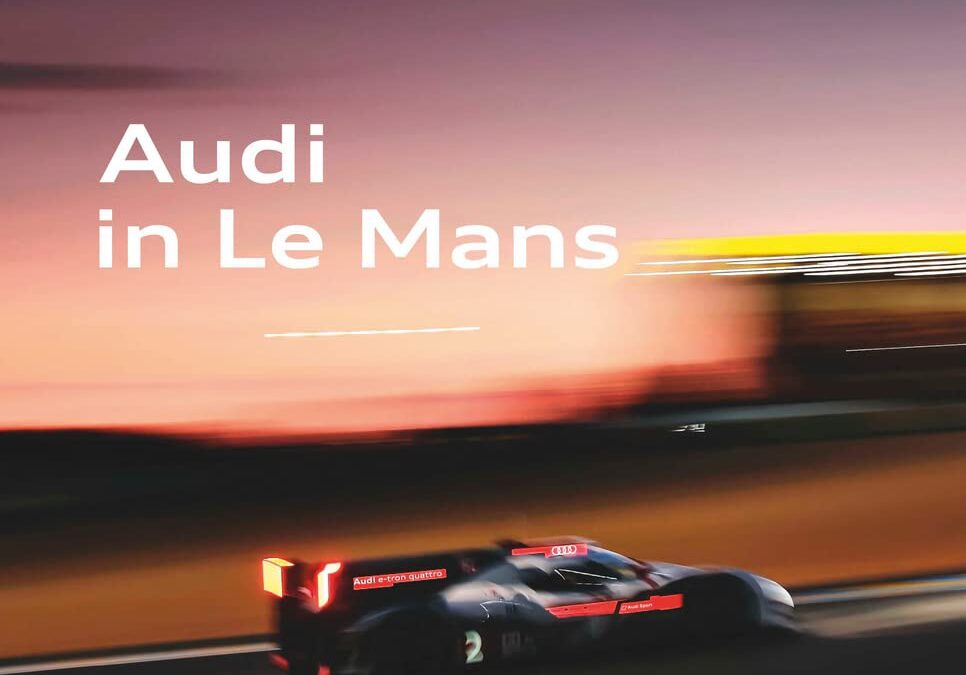
It was a reasonable success when in 1999 the first Audi R8 drove directly onto the stage in Le Mans. One year later it was the overall victory with a triumphant triple place. Up until 2016 the race cars with four rings got 12 more victories, making competitors tremble at the world’s hardest motor race. On occasion of the 100th anniversary of the legendary 24 hour race the text-and-picture book Audi in Le Mans undertakes an exciting journey into the past. Impressive pictures and loads of background knowledge from the company’s archives tell us about a piece of Audi history – with fresh eyes and full of suspense. All highlights, all successes: Audi Sport‘s spectacular success story at Le Mans Backgrounds, facts and stories on Audi models, drivers and races Audi race car in the flashlight: numerous photos from the company’s archives Thrilling car book with high-quality design: ideal gift for Audi fans and race enthusiasts Starting a new race car series is a challenge for car makers. The 24 hours of Le Mans are especially known as a severe endurance test for man and material. And Audi knew how to use the famous long-distance race as a stage for new technologies, all the while living up to their slogan “Vorsprung durch Technik” (“leading by technology”): the fast and reliable Audi models left their competitors in the dust. Also, the first victory of a car with diesel-and-hybrid technology went to the German car brand. In more than 300 pages, this illustrated book depicts the impressive history of the brand from 1999 until the WEC exit in 2016.
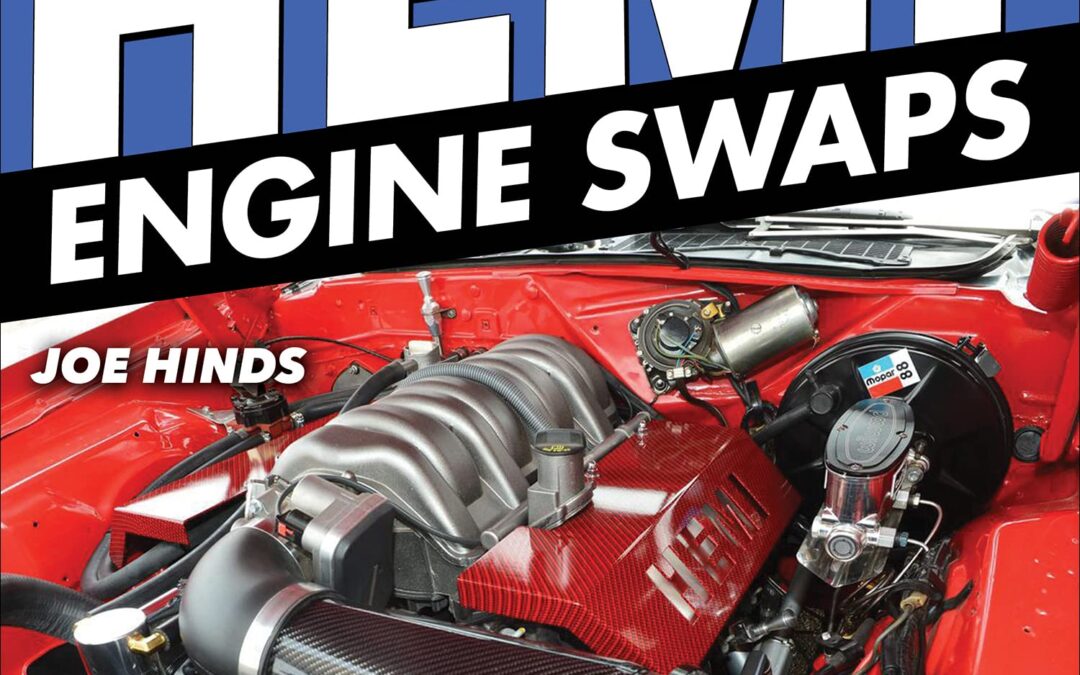
Have you made plans for a new Hemi swap into your classic car? Maybe you’re just curious about the process and want to know how much work is involved. Either way, New Hemi Engine Swaps: How to Swap 5.7L, 6.1L, 6.4L, and Hellcat Engines into Almost Anything has you covered!
Even casual enthusiasts are aware of how many people are swapping modern technology into vintage chassis. Successful LS swaps have been common for more than a decade. They seem to be everywhere among GM enthusiasts.
On the Mopar side, the new Hemi platform is now 20 years old, so plenty of salvage-yard cores are available. With the introduction of the new Hellcat in 2015 (as well as a more robust crate-engine program in recent years directly from Mopar), aftermarket manufacturers have recently seen the wisdom of making peripherals and parts to simplify the process of this swap. Suddenly, swapping a crate Hemi seems as achievable as an LS swap.
In New Hemi Engine Swaps: How to Swap 5.7L, 6.1L, 6.4L, and Hellcat Engines into Almost Anything, expert Joseph Hinds guides you through the process of turning your vintage ride into a modern street machine. The essentials are covered, including engine mounts, transmission cross members, headers that actually fit, and solutions for other common issues. Also covered are fuel-supply items (pumps and tanks) and engine-compatibility concerns (oil filter locations and oil-pan accommodations). Finally, the biggest concerns for most are the wiring, modern power train control modules (PCMs), computer controls, and fuel injection, all of which are covered here as well. There are even step-by-step instructions to fit a modern Hemi into an early-1970s-era Duster as well as a feature about programming aftermarket electronic fuel-injection (EFI) systems.
Now that the degree of difficulty in performing these swaps no longer requires a degree in computer science with welding certifications on the side, many are looking at their vintage Mopars in a new light. Whether you want to do this yourself, farm it out to a professional, or if you are just curious about how it is done, this is the guide for you.
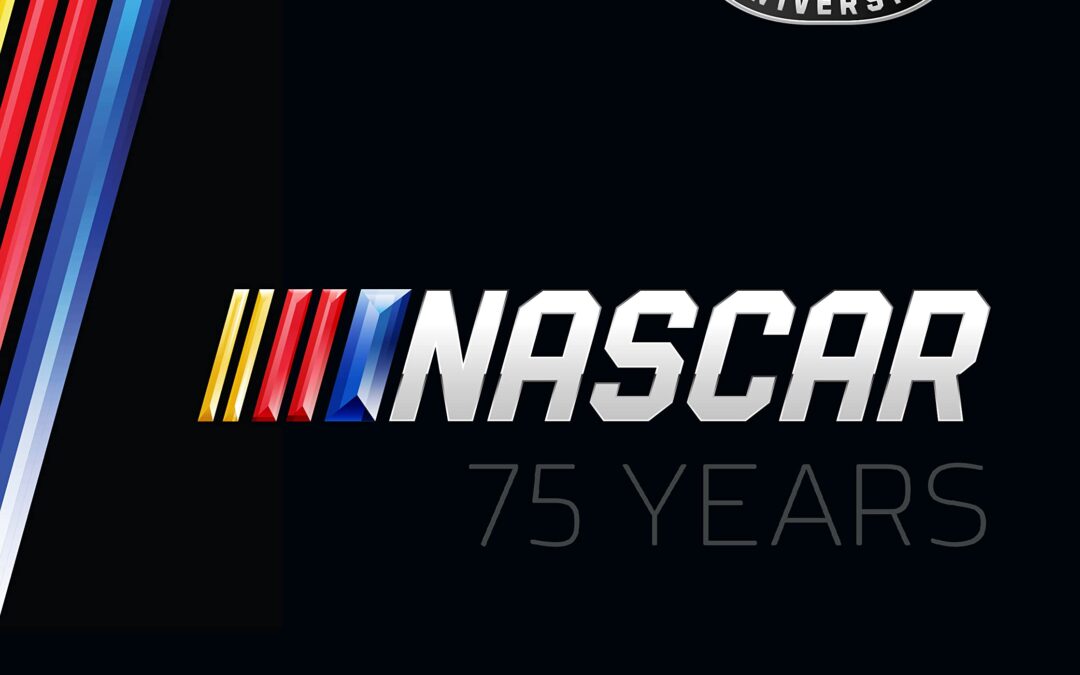
Explore the thrilling illustrated story of NASCAR stock car racing in America with this stunning celebration filled with evocative photography, legendary drivers, and a decade-by-decade history.
NASCAR 75 Years captures the greatest moments throughout the decades: from the beaches of Daytona to the jaw-clenching competition, the mind-bending technology, the triumphs, the teamwork, and the high-speed thrills. Large-format photography from throughout NASCAR history brings it all to life alongside narratives written by a roster of veteran NASCAR reporters and historians.
Follow NASCAR’s growth from a small, innovative family business to a leader in sports entertainment, witnessed each week by millions in person and on national television. The authors show the evolution of the vehicles—from modified family sedans to 700-horsepower race-built behemoths, all the way through the “Next Gen” cars that debuted in 2022—and celebrate the drivers who have piloted them around tracks like Daytona, Talladega, Darlington, Las Vegas, and more —legendary heroes with names including Flock, Weatherly, Petty, Allison, Yarborough, Earnhardt, Waltrip, Gordon, Stewart, Johnson, Busch, all battling wheel to wheel, week after week, across the United States.
This beautifully designed and extensively illustrated book provides the ultimate history of the legendary series, celebrating the drivers, crew chiefs, pit crews, owners, and tracks, from the earliest days on Florida’s beaches right through to today’s superspeedways, short tracks, and road courses. Compiled by authors with a passion for motorsport, NASCAR 75 Years is a volume no fan can be without.

Realize your Ford Coyote engine’s full potential by using this detailed resource as a guide to select the right parts for the street or the strip.
Veteran Ford writer and historian, Jim Smart, explains and highlights all of the latest and greatest options to achieve more horsepower and torque, and of course, faster quarter-mile times in Ford Coyote Engines: How to Build Max Performance-Revised Edition.
In this Revised Edition, now covering Generation III engines as well as Generation I & II, upgrades included are engine building techniques, cold-air induction kits, supercharger and pulley kits, better exhaust headers, fuel system and ECU tuning upgrades, and more. Both Ford and the aftermarket have produced an array of parts to squeeze even more power out of your Coyote.
Ford introduced its first “clean slate design” V-8 engines in the early 1990s in Ford, Lincoln, and Mercury models. Known as the “Modular” engine family, the 4.6L engines employed new overhead cams, multi-valve performance, distributorless ignition, and more. This engine had new technology for its time, and it proved to be an extremely durable workhorse that logged hundreds of thousands of miles in police and taxi applications as well as light-duty trucks. And, of course, hotter versions, and even supercharged versions, found their way into performance applications such as Mustang GTs and Cobras.
By 2011, Ford wanted something hotter and more current, especially for its flagship Mustang GT and GT350 models, which were suddenly competing with new 6.2L LS3 engines in Camaros and 6.4L Hemi engines in Challengers. Enter Ford’s new 5.0L “Coyote” engine with Twin Independent Variable Cam Timing (Ti-VCT); it was an evolution of the earlier 4.6L and 5.4L Modular designs. Although the new Coyote engine had increased displacement, it still had far fewer cubes than the competition. Despite less displacement, the Coyote could hold its own against bigger Chevy and Chrysler mills thanks to advanced technology, such as 4V heads with better port and valvetrain geometry. The Coyote is also Ford’s first foray into technology that includes Ti-VCT and cam-torque-actuated (CTA) function, which is a fancy way of saying variable cam timing for an incredible power curve over a broader RPM range. Now, in Generation III, Ford has implement a system using both Port and Direct Fuel Injection, taking advantage of the benefits of both systems in a single application.
Even with all of this new technology, there is always room for improvement. If you are looking for even more power from your new Coyote, look no further than this volume.

Learn about the entire history of America’s best-selling vehicle: The Ford F-Series truck.
When Henry Ford first started manufacturing Model Ts more than 100 years ago, he didn’t really have any sort of pickup or truck configuration in mind. However, enterprising people and businesses were modifying those early chassis for commercial use, and it didn’t take long for Ford to figure out that there was a demand for a truck application of the Model T. Soon, Ford was making its own configurations for commercial use, first through third-party body companies and eventually by Ford itself with the Model TT. From these humble beginnings, Ford stumbled onto the basis for one of the most popular vehicles ever built: the Ford F-Series pickup truck.
In Ford F-Series Trucks: 1948–Present, authors Jimmy Dinsmore and James Halderman thoroughly dissect the history of Ford F-Series pickup trucks as seen from a technical viewpoint. Fully covered are all the options, chassis specifications, running changes, and the evolution of these trucks, as they transformed from postwar utilitarian vehicles to the best-selling luxury family cruisers seen today. Not only are Ford trucks the best-selling trucks, they are the best-selling vehicle of any category, cars included.
This book will thrill truck aficionados and Ford historians alike, as it covers the first F-Series models (1948–1952), the ever-popular second-generation F-Series models (1953–1956), the popular Bumpsides (1967–1972), and all the way through the remarkable technology of what is now the 14th generation of the F-Series.

An event as significant for Alfa Romeo enthusiasts as the reopening of the marque’s historic museum at Arese – held in 2015, the year in which Alfa celebrated its 105th anniversary – could hardly be celebrated without a book.
The official catalogue of the new museum represents an opportunity to review the history of the marque and above all to accompany the reader/visitor around the new exhibition layout in which the cars have been thematically grouped and subdivided.
The glorious racing cars (from the P2 to the 33 in all their variants, through to the less successful cars that competed in F1) are brought together under the section VELOCITA’ introduced by Alfa Romeo driver Nino Vaccarella, while cars such as the 1759, 8C 2900, 6C 2500, 1900, Giulietta and Alfetta, along with the most recent production models, illustrate the most important episodes in the Biscione’s industrial history in the TIMELINE section – introduced by American journalist Nick Czap.
The section BELLEZZA – introduced by designer Lorenzo Ramaciotti, head of Style for the Fiat Group for years – focuses on the undisputed protagonists being cars such as the 33 Stradale, the Carabo and the Nuvola, milestones in the evolution of automotive styling.
A specific chapter also features all those models that do not appear in the exhibition.
The catalogue is an indispensable instrument for all those visiting this authentic temple of history, technology and culture.
This is the Soft Cover edition.
















